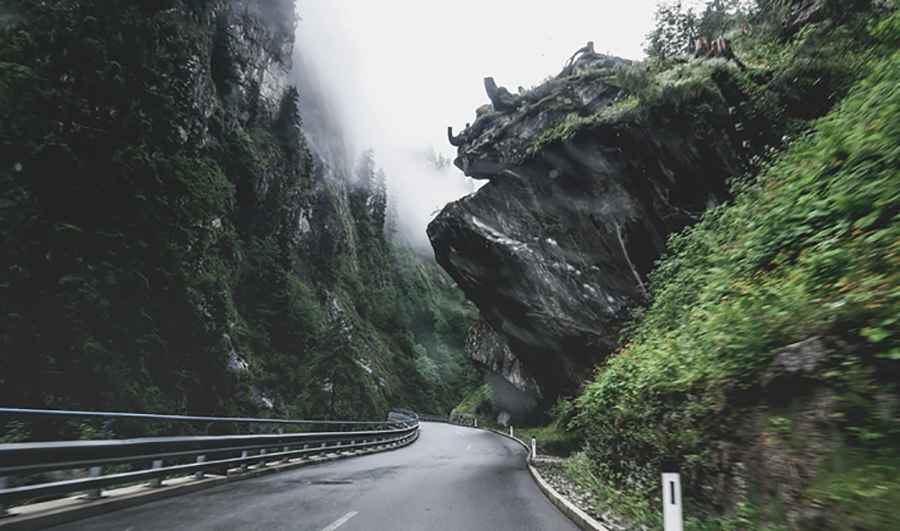The Hidden Dangers of Rural and Mountainous Roads: Why Drivers Must Be Extra Cautious
Scenic, peaceful, and often thrilling, rural and mountainous roads attract countless drivers looking for adventure or a quiet escape. However, beneath their beauty lies a host of hidden dangers. Unlike city streets and highways, these roads are often poorly maintained, lack adequate safety measures, and present unpredictable challenges such as wildlife crossings and extreme weather conditions.

Many drivers underestimate the risks, assuming that slower speeds or lighter traffic make these roads safer. In reality, the opposite is often true. Accidents in remote areas can be severe, and seeking medical or legal help after a crash can be more complicated. If you’ve been in an accident due to dangerous road conditions, MTVlaw.com car accident lawyers can help determine if you have a case against negligent road authorities.
Understanding these risks and knowing how to navigate them safely can prevent accidents, injuries, and costly legal battles. Here’s what drivers need to know.
Why Rural and Mountainous Roads Are Riskier
Driving in remote areas presents challenges that city and highway driving simply don’t.
•Limited safety infrastructure –
Many rural roads lack guardrails, road signs, and proper lighting. Sharp turns and steep drop-offs become even more dangerous without these protections.
•Winding, narrow roads –
Many mountain roads have blind curves, making it difficult to see oncoming traffic. Passing opportunities are limited, increasing the risk of head-on collisions.
•Less law enforcement –
With fewer police patrols, reckless drivers are more likely to speed or take unnecessary risks.
•Emergency response delays –
In the event of an accident, it can take much longer for emergency services to arrive due to the remoteness of the location.
Drivers need to be extra vigilant, drive at safe speeds, and remain aware of their surroundings at all times.
Poorly Maintained Roads: A Silent Threat
One of the biggest dangers of rural and mountain roads is poor maintenance. Many of these roads are rarely serviced, leading to:
- Potholes and cracks that can cause tire blowouts or loss of control.
- Loose gravel that reduces traction, especially on curves.
- Worn or missing road markings that make it hard to judge lanes.
- Eroded road shoulders that can cause vehicles to slip off the edge.
Can You Hold the Government Responsible?
In some cases, government agencies may be liable for accidents caused by poor road maintenance. However, proving negligence can be difficult. Factors such as jurisdiction, budget constraints, and the presence of warning signs all play a role. If an accident occurs due to a dangerous road condition, consulting a legal expert can help determine whether a claim is possible.
The Dangers of Wildlife Crossings
Wildlife collisions are another serious risk when driving in rural areas. Animals such as deer, elk, and moose are active at dusk and dawn, often wandering onto roads unexpectedly.
The Risks of Hitting a Large Animal
- A collision with a large animal can cause severe damage to vehicles and serious injuries to drivers and passengers.
- Swerving to avoid an animal can lead to worse accidents, such as running off the road or colliding with another vehicle.
- Certain states have laws regarding liability when an animal is hit—insurance coverage may or may not apply.
How to Reduce the Risk
- Be extra cautious when driving at dawn or dusk.
- Use high beams in dark areas to spot animals sooner.
- Slow down when you see wildlife warning signs.
- If an animal crosses, be prepared for more to follow.
Extreme Weather Hazards
Mountain weather can change in an instant, making driving conditions treacherous.
•Fog and low visibility –
Thick fog can make it nearly impossible to see oncoming traffic or curves in the road.
•Black ice and snow –
Even in mild climates, higher elevations can have snow and ice that catch drivers off guard.
•Landslides and rockfalls –
Heavy rain can loosen rocks, causing sudden landslides that block roads or strike vehicles.
How to Stay Safe in Bad Weather
- Check weather forecasts before heading into the mountains.
- Carry an emergency kit, including blankets, food, water, and a flashlight.
- Use chains or snow tires in icy conditions.
- If visibility is poor, pull over in a safe location rather than risking an accident.
What Drivers Can Do to Stay Safe
Despite these risks, drivers can take steps to protect themselves.
Before You Drive
- Plan your route in advance, noting potential hazards.
- Make sure your vehicle is in good condition, with properly inflated tires and functioning brakes.
- Pack an emergency kit, including a first aid kit, flashlight, extra food, and a phone charger.
On the Road
- Drive at a safe speed—just because a road’s speed limit is 55 mph doesn’t mean it’s safe to drive that fast on a winding mountain pass.
- Stay alert and avoid distractions.
- Use lower gears on steep descents to avoid brake failure.
- If you feel unsafe, find a safe place to pull over rather than taking risks.
After an Accident: Know Your Legal Rights
If you’re involved in an accident on a rural or mountainous road, determining liability can be complicated. Was the accident caused by poor road maintenance, another driver’s recklessness, or an unavoidable natural hazard? Understanding your legal rights can help you recover damages for medical bills, lost wages, and vehicle repairs.
Conclusion
Rural and mountainous roads offer breathtaking scenery and thrilling drives, but they also pose serious dangers. Poor road conditions, wildlife crossings, and extreme weather make these roads far riskier than they appear.
By driving cautiously, staying prepared, and knowing what to do in case of an accident, drivers can reduce their risk and enjoy these roads safely. However, when accidents do happen, it’s important to understand legal options. If a crash was caused by unsafe road conditions or another party’s negligence, legal assistance may be necessary to seek compensation.
No matter how beautiful the drive, safety should always come first. Stay alert, stay prepared, and drive smart. It could save your life.
Additionally, it’s crucial for drivers to advocate for better road safety in rural and mountainous areas. Reporting dangerous road conditions to local authorities, participating in community safety initiatives, and supporting infrastructure funding can lead to meaningful improvements over time. Public awareness is a powerful tool in reducing accidents—drivers who understand the risks and spread that knowledge contribute to a safer environment for everyone.
As more people venture off the beaten path for recreation or necessity, it’s up to all of us to approach rural driving with respect, caution, and responsibility. Safe travel isn’t just about avoiding accidents—it’s about making sure every journey, no matter how remote, ends in a safe arrival.
